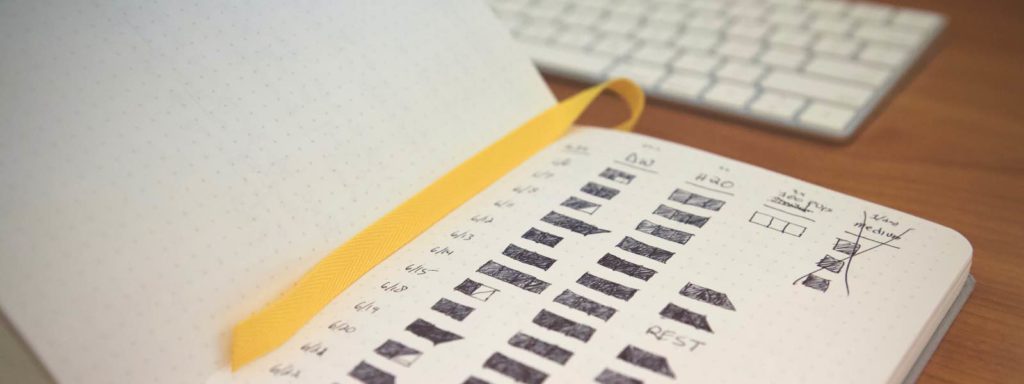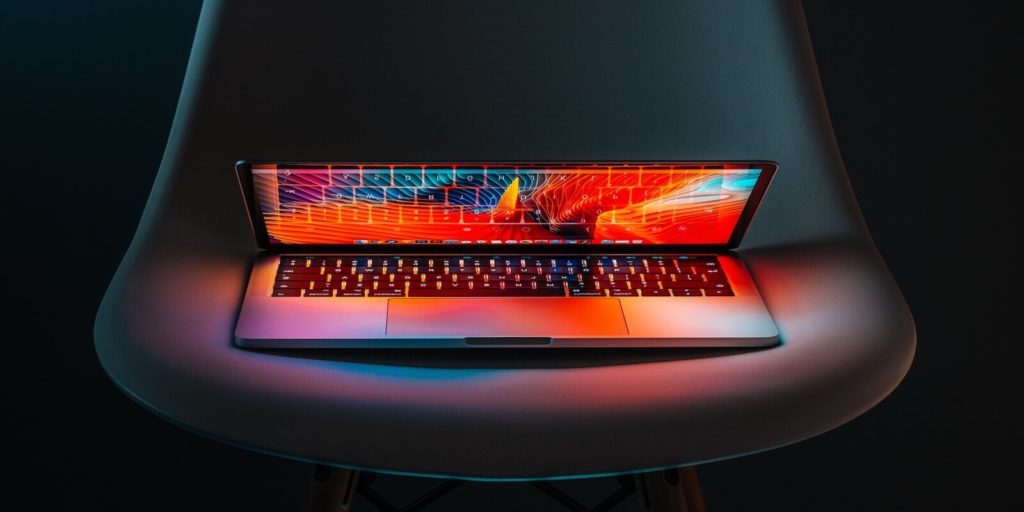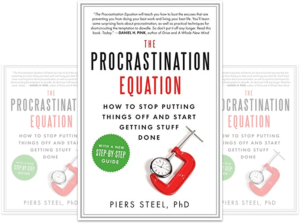If you’ve tried to stop procrastinating but haven’t managed to be successful yet, this guide is for you.
I’m going to walk you step-by-step through 5 of the most effective anti-procrastination strategies I know of.
As a professional psychologist, these are the strategies I use day-in and day-out to help my clients eliminate procrastination and massively increase productivity.
Here are the 5 best strategies you can use to stop procrastinating. You can quickly jump to the one that looks most interesting using the links below:
- Productive Procrastination
- The Seinfeld Method
- The Procrastination Equation
- Digital Minimalism
- Mindfulness
Okay, let’s dive in!
1. Productive Procrastination

If you’ve struggled with procrastination for a long time and tend to really beat yourself up about it, this is the strategy for you.
What It Is
Productive Procrastination is a collection of three effective but counterintuitive techniques for “rolling with” the urge to procrastinate rather than fighting against it. They include:
- Reframing negative self-talk about procrastination
- Consistent Procrastination
- Cultivating work-interest synergies.
Who It’s For
Productive Procrastination tends to be especially useful for people who have a lot of negative emotions around procrastination. If you tend to beat yourself up internally, think of yourself as a procrastinator, or find yourself ruminating and worrying a lot about your procrastination, productive procrastination is probably a good place to start.
How To Do It
STEP 1: Change the way you talk to yourself when you feel the urge to procrastinate.
Most people who struggle with procrastination have developed unhelpful mental habits around how they talk to themselves about procrastination. They tend to be overly judgmental and critical of themselves, saying things like “I wish I wasn’t such a procrastinator” or “Why can’t I just get it together and get things done like everyone else?!”
The problem with self-talk like this is that it adds a second layer of negative emotion on top of your already negative feelings about your work. Feeling afraid or frustrated about what you need to do is hard enough without also feeling guilty and ashamed.
But, if you can change the way you talk to yourself about your procrastination to be more understanding and realistic, you can reduce or eliminate this second layer of negative emotions.
When you find yourself engaging in lots of negative self-talk around procrastination, try substituting some realistic alternative thoughts and explanations like these:
- It’s true that I tend to procrastinate with homework. But I can be very disciplined in other areas of my life like sports.
- I am struggling with procrastination right now, but I’m also taking proactive steps to work on it.
- Some of the most productive, accomplished people in history also struggled with procrastination.
STEP 2: Procrastinate consistently.
Rather than a character flaw or lack of discipline, one way to look at procrastination is a natural desire for curiosity and variety in our work.
If you can make time on a regular basis to cultivate your many different interests and curiosities in small ways, you’ll be less likely to feel the need to indulge them in big ways via procrastination on a major task.
To do this, allow yourself to procrastinate regularly, but do it intentionally. If you have 3 hours of studying to do today, set up 10 minutes at the end of each hour to indulge your procrastination guilt-free.
STEP 3. Cultivate interests that synergize with your work.
When you study people who manage to be extremely productive despite struggling with the urge to procrastinate, one thing stands out: they procrastinate with productive activities.
Consider two different procrastinators, both of whom, let’s say, are software engineers who build apps and software for a living:
- Procrastinator A indulges the urge to procrastinate on his coding by playing video games and binge watching Netflix.
- Procrastinator B indulges the urge to procrastinate by reading blogs about new trends in computer science and dabbling with website design.
In both cases, procrastination will lead to a loss of productivity. But in the case of Procrastinator B, their interests (computer science and website design) have synergies or complementarity with their work.
If they decided to launch their own app on the side, for instance, the interest and time spend “procrastinating” with website design would actually turn out to be useful and productive in the long-run.
If you cultivate hobbies and interests that are indirectly supportive of your primary work, whenever you do procrastinate, you’ll be doing so productively.
Productive Procrastination Takeaways:
- Productive Procrastination is a collection of techniques for “rolling with” your procrastination rather than fighting against it.
- Change your self-talk around procrastination.
- Procrastinate consistently
- Cultivate work-interest synergies
- But more than a set of techniques, productive procrastination is also a mindset. It’s a way of looking at procrastination not as some kind of virus or disease, but as a natural human inclination that can be channeled productively.
2. The Seinfeld Method

Named for the hugely successful (and productive) comedian Jerry Seinfeld, The Seinfeld Method is the best technique out there for staying consistent with your work.
What It Is
The Seinfeld Method is a productivity technique popularized by a Lifehacker article called Jerry Seinfeld’s Productivity Secret.
It’s the technique that Seinfeld used himself to consistently produce new material for his comedy act and tv show year after year.
Here’s how Seinfeld himself described it to someone interviewing him:
He told me to get a big wall calendar that has a whole year on one page and hang it on a prominent wall. The next step was to get a big red magic marker.
He said for each day that I do my task of writing, I get to put a big red X over that day. “After a few days you’ll have a chain. Just keep at it and the chain will grow longer every day. You’ll like seeing that chain, especially when you get a few weeks under your belt. Your only job next is to not break the chain.”
“Don’t break the chain,” he said again for emphasis.
Who It’s For
The Seinfeld Method is useful for anyone trying to establish a new habit, but it’s especially useful for people who have a hard time staying consistent with the goals they set for themselves.
How To Do It
While the traditional method involves buying a big wall calendar, I find it just as useful to use a notebook or journal to track my progress on my goals.
Getting started is as simple as drawing out a simple grid:
- Label the first column Date, and in the second column, put the label of the thing you want to do every day (e.g.: write 500 words, 50 pushups, practice guitar for 20 min, etc).
- Keep your notebook, journal, or calendar in a highly visible, accessible spot near where you work.
- Immediately after you complete the task, mark it off with a checkmark, filling in a square, or whatever fun little method makes sense to you.
- Think of the whole project as a game: The more days in a row you achieve your goal the better.
- If you do happen to miss a day (everybody’s human :), mark the length of your streak next to that day. This number now becomes your next goal (i.e. make it at least 12 days without breaking the streak).
Seinfeld Method Takeaways:
- The Seinfeld Method is the best anti-procrastination productivity strategy for people who struggle with consistency in particular.
- By keeping a pen and paper record of your daily goal you are: A) More likely to stay mindful of your goal and remember to do it each day, and B) More likely to stay consistent since it’s positively reinforcing and rewarding to see a visible sign of your progress over time.
3. The Procrastination Equation
If you’ve tried the usual tips and tricks for eliminating procrastination but feel like none of them really work for you specifically, the Procrastination Equation may be just what you need.
What It Is
The Procrastination Equation is a model of procrastination developed by the psychologist and researcher Piers Steel.
Based on decades of research into the true causes of procrastination, The Procrastination Equation says that there are 4 primary causes or variables when it comes to why we procrastinate:
- Low Self-Confidence. When we don’t have much confidence in our ability to complete a task (or to complete it well), our likelihood of procrastinating goes way up. This shows up most commonly when we’re uncertain about how to start a task.
- Non-valuable or enjoyable work. The more enjoyable and valuable a task, the less we procrastinate on it. Interestingly, boring tasks are actually more likely to lead to procrastination than extremely difficult tasks.
- Distractibility. If we’re easily distracted—or work in a highly distracting environment—and have a hard time resisting those distractions, we’re much more likely to procrastinate.
- Time Delay. How much time there is in between the decision to take on a task and the point when it must be completed? The longer you have to finish a task, the longer you’ll wait to get started on it.
What’s more, there’s a very specific relationship between all these factors and our odds of getting work done and not procrastinating.
As a formula, it looks like this:
Odds of Overcoming Procrastination = Self-Efficacy x Value / Impulsiveness x Delay.
In other words, our likelihood of resisting procrastination and getting our work done on a given task will be equal to the product of our self-efficacy and the value of the task divided by the product of how impulsive/distracted we are and the amount of delay between taking on a task and its due date.
Who It’s For
More than an academic curiosity, the Procrastination Equation can be especially useful for people who aren’t sure what the main cause of their procrastination is.
The beauty of The Procrastination Equation is that it validates the idea that while there are common factors in procrastination, everyone’s struggle with procrastination will be different.
But, if we can break done the tendency to procrastinate into smaller pieces, it allows us to generate effective strategies for overcoming procrastination in an individualized and situation-specific way.
How To Do It
If you struggle consistently with procrastination, ask yourself: Which of the following sounds most like me?
- I often discount myself and my ability to do good work. I’m very in my head and experience a lot of shame, doubt, and anxiety when I sit down to work.
- I just can’t stand this stuff. My work is so boring and meaningless. Why does any of this matter?
- I can’t seem to go more than a few minutes before I find myself distracted by checking Facebook or texting with a friend. I just get so distracted all the time!
- I feel like I have terrible time management abilities when it comes to my work. I always think there will be more time. And then I find myself rushing to get things done at the last minute.
If one of these stands out for you, consider focusing your efforts to stop procrastinating on that particular aspect of your work.
For example, if you find that anxiety and negative self-talk are the biggest factor in not getting your work done, you might consider breaking down your tasks into smaller pieces to give yourself quick wins and build up your confidence and sense of self-efficacy.
The Procrastination Equation Takeaways
- Procrastination can be complex. Research shows that there are four primary causes for procrastination:
- Low self-efficacy
- Low task value
- High impulsiveness and distraction
- A long delay between task onset and completion.
- The key to successfully stop procrastinating is to understand how each of us is uniquely vulnerable to procrastination given both our own personality and our ever-changing environment. Then, we can tailor our strategies to our own unique vulnerabilities.
4. Digital Minimalism

Are you the kind of person who’s easily distracted, especially by your smartphone or the internet? If you have a hard time maintaining focus and concentration because of all the intriguing shiny things the internet has to offer, Digital Minimalism is for you.
What It Is
Digital Minimalism is a philosophy and lifestyle that questions the increasingly large role of personal technology in our lives and tries to set appropriate boundaries on that technology.
Here’s the best definition of Digital Minimalism I know of from Cal Newport:
Digital minimalism is a philosophy that helps you question what digital communication tools (and behaviors surrounding these tools) add the most value to your life. It is motivated by the belief that intentionally and aggressively clearing away low-value digital noise, and optimizing your use of the tools that really matter, can significantly improve your life.
Who It’s For
Digital Minimalism is the best solution for anyone who’s tendency to procrastinate comes primarily from being distracted by personal technology.
I would strongly recommend Digital Minimalism if you frequently find yourself doing any of the following activities at the expense of your work:
- Checking Facebook, Instagram, or other social media more than a few times per day.
- Checking email or Slack all throughout your day, including while you work or when you’re trying to relax.
- Binge watching Netflix or YouTube.
- Getting distracted from your work by interesting blog posts, newsletters, Reddit posts, etc.
- You’re constantly plugged into the news, either via TV, social media, or radio/podcasts.
Because digital technology has become so pervasive in our lives, many of us aren’t even aware of how influential it has become on our ability to simply sit down and work for a meaningful stretch of time.
How To Do It
The best way to get started with Digital Minimalism is to experiment with some kind of digital declutter challenge.
The basic idea is to remove all optional digital technology from your life for a fixed amount of time (anywhere from a week to a month is a good place to start).
A digital declutter has two important benefits:
- You get a taste for what it’s like to not be constantly bombarded by digital distractions 24/7. Once you allow yourself this time, it feels good and right. And this feeling provides a strong motivation to follow through with the sometimes difficult task of setting firm boundaries with our tech moving forward.
- Once you finish the challenge, you can more thoughtfully decide which digital technology and behaviors you want to let back into your life. Specifically, you’ll be in a much better place to evaluate which digital technologies and behaviors really align with your values and what’s important to you (like doing good work without distraction), and which ones do not.
Digital Minimalism Takeaways
- One of the biggest causes of procrastination is distraction. And these days, our digital technologies like social media and smartphones are the biggest source of distraction. This digital distraction is a big part of why we find it so hard to stop procrastinating.
- Digital Minimalism is a way of looking at personal technology that helps us to set better boundaries with our tech and more easily live according to what’s truly important to us—not the newest shiny object the internet has to offer.
5. Mindfulness

If there was only one strategy I could recommend to help people stop procrastinating no matter what the particulars of their situation, it would be mindfulness.
In one way or another, emotions tend to be the factor that derails us from our work and leads to procrastination. And mindfulness is the best way to cultivate a better, less reactive relationship with our emotions.
What It Is
Here’s the best definition I know of for mindfulness:
Mindfulness is the mental habit of paying attention without thinking.
To be a little more specific, mindfulness is like a mental muscle that allows us to control and manage our attention.
And skillful control of our attention—what we choose to focus on and what we leave out of focus—is the key skill for doing great work.
If you can’t focus and maintain concentration, how can you ever hope to get meaningful work done?
Who It’s For
While a better-trained muscle for attention and focus is obviously helpful for resisting distraction, mindfulness is also the best antidote to emotional reactivity.
If there’s one thing them that runs throughout all the causes of procrastination, it’s emotional reactivity, which simply means that we tend to react instinctively to how we feel rather than deliberately.
Suppose you’re sitting down to finish writing a report for work and a notification pops up on your phone letting you know that you have a new text from that guy you’ve been dating. Immediately you feel a sense of excitement and your instinctive response is to indulge that feeling of excitement by instantly checking your phone and texting back.
That’s emotional reactivity—responding unthinkingly to how we feel.
Mindfulness, on the other hand, can be thought of at emotional non-reactivity.
Whenever a sudden feeling strikes, can we pause, observe the feeling, and then make a thoughtful decision about how to proceed with our values in mind?
Mindfulness allows us to direct our behavior and actions toward our values rather than what feels right at the moment.
And since we often don’t feel like working but know it’s the right thing to do, mindfulness is an essential tool to help you stop procrastinating and do the work that’s important to you.
How To Do It
There are two parts to cultivating mindfulness:
- A formal mindfulness practice
- Ordinary Mindfulness
A formal mindfulness practice means spending at least a few minutes every day doing mindfulness meditation.
If the idea of meditation sounds too spiritual or woo-woo, don’t worry. It’s just a simple exercise that helps you train your attention.
In addition to practicing mindfulness in a structured way, it’s also important to incorporate the attitude of mindfulness into everyday life.
This is where Ordinary Mindfulness comes into play.
If we want to be able to be more mindful, less emotionally reactive, and ultimately more productive with our work, practicing small acts of mindfulness throughout the day can really help.
Mindfulness Takeaways
- We often fall into procrastination as a result of emotional reactivity—instinctively behaving according to how we feel rather than what’s most important to us.
- Mindfulness is a way of training our attention to be able to resist the pull of emotional reactivity and stay focused on our highest values like doing good work.
Conclusion and More Resources
Here’s my final recommendation for anyone struggling to stop procrastinating:
Take it one piece at a time.
Pick one of the strategies from this guide and implement it until you’ve been successful.
Better to really nail down some modest improvement in one area rather than jumping from one to another without making any real progress.
Additional Resources to Help You Stop Procrastinating
- Nils and Jonas Salzgeber over at NJLifeHacks have a great recent article on 8 Must-Read Books on Procrastination. Highly recommended.
- James Clear has a great little guide called How to Stop Procrastinating by Using the “2-Minute Rule”
- MindTools has a nice round-up of many different techniques and strategies to help you stop procrastinating.
- Paul Graham’s Good and Bad Procrastination is a classic and one of my favorite things ever written about procrastination.
- Hugh Culver has a simple 3-step system to stop procrastinating that’s definitely worth a read.
Lastly, if nothing else works to get a handle on your procrastination, it may be beneficial to seek professional help from a therapist or counselor.
Good therapy or coaching can often be just the thing we need to identify the real obstacles to our success and create a plan for working through them.






5 Comments
Add YoursI grew 2 inches at 31 years old and ever since my confidence/ productivity is on a different planet. Anyone looking to do the same check out heightify.com.
Can you please describe the difference between a professional psychologist and a psychologist? Is the difference just a matter of confidence, ie I’m not confident in my skills/abilities so im going to put ‘professional’ in front of psychologist ?
Hi Lydia,
I don’t believe there’s a technical difference between the two, however, I often see “professional psychologists” used to distinguish people who actually practice psychology in a professional manner as opposed to those who studied it and maybe have a degree in it but don’t work in the field. That’s how I use it, anyway. Good question.
Hello again 🙂
The procrastination equation is in fact a more complete version of the expectancy theory where you choose between an action depending on the result of a simpler equation: probability x value. That’s why we choose a temptation because even though the value is minimal I’m holding a remote:)
The best description and advice about procrastination I read, especially about mindfulness! I realized that it’s an emotional fear of not being able to complete a creative project that makes me waste time worrying about it. Thank you so much!